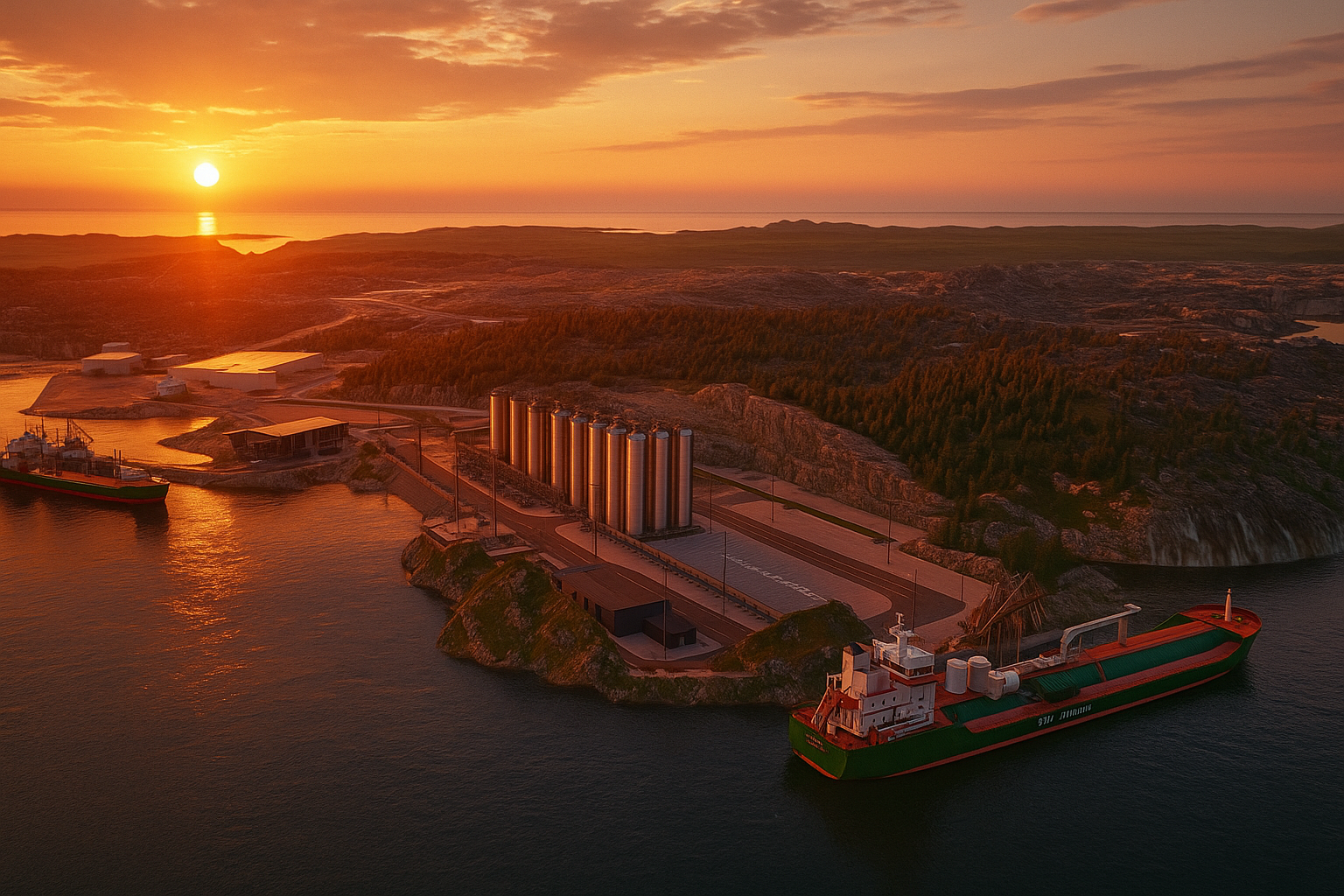Unlocking Carbon Value: Strategic Investment for Resilient & Efficient CCS
By GrowEasy | Dubai, UAE | June 15, 2025
Northern Lights CCS
Executive Summary
As the global push for net-zero intensifies, Carbon Capture and Storage (CCS) has emerged as a cornerstone of industrial decarbonization. The CCS market, forecasted to grow from $4.51 billion in 2025 to $14.51 billion by 2032 at an 18.18% CAGR, represents a profound opportunity for strategic capital deployment. GrowEasy’s investment lens—grounded in operational excellence and deep regional insight—reveals that the Middle East, Africa, and Former Soviet Union (FSU) regions possess untapped potential but are hindered by cost, regulatory, and scalability barriers. This insight report, informed by GrowEasy’s foundational expertise, outlines how investors can unlock superior returns by integrating rigorous due diligence, operational optimization, and ESG-aligned strategies.
Market Dynamics: CCS as a Growth Engine and Risk Mitigator
Global CCS Trends
Strong policy tailwinds: Emissions targets, carbon pricing, and green finance eligibility.
Tech maturity: Blue hydrogen, post-combustion capture, and DAC scaling.
Capital flows shifting toward industrial decarbonization-as-a-service models.
Growth Opportunity in Emerging Markets
Middle East: Government-backed mega projects (e.g., Aramco, ADNOC) are redefining the scale of integrated CCS.
Africa: Nascent but rising voluntary carbon market and concessional financing-driven projects.
FSU: Industrial CO2 intensity, strong geological potential, but geopolitical and policy complexity remain hurdles.
Regional Insights: Strategic Positioning
Middle East
Saudi Arabia targets 44 MtCO2/year by 2035; Aramco’s CCS value chain is a global benchmark.
Qatar’s Ras Laffan and UAE’s DAC initiatives highlight first-mover advantages.
CCS used for Enhanced Oil Recovery (EOR) and permanent sequestration.
Investment Strategy: Partner with NOCs or industrial anchor clients to leverage shared infrastructure. Focus on scalable EOR/CCUS projects with MRV systems.
Africa
North African pilot programs (Egypt, Morocco) aligned with renewables.
Kenya’s voluntary carbon auction (2.2 Mt credits) highlights monetization potential.
Energy-water-resource nexus considerations are key.
Investment Strategy: Early-stage infrastructure investment via PPPs. Emphasize risk mitigation through blended finance and project insurance. Pilot scalable carbon value chains.
Former Soviet Union (FSU)
Kazakhstan and Russia have high-emission industrial zones and legacy storage formations.
Technical potential is high, but sanctions and legal maturity vary.
Investment Strategy: Collaborate with domestic energy firms; pursue strategic minority stakes in pilot projects. Prioritize modular solutions and policy engagement.
Key Investment Pillars: Growth, Excellence, Risk Management
Operational Due Diligence
Assess full value chain: capture tech energy intensity, retrofitting requirements, compression & transport logistics.
Geological verification critical to avoid underutilized storage.
Evaluate redundancy, system uptime, contractor risk, and MRV compliance.
ESG-Linked Financing and LP Reporting
ESG audits must prioritize permanent sequestration over EOR-only models.
Align CCS initiatives with SFDR, TCFD, and taxonomy-compliant investment frameworks.
Enhance exit valuation through third-party ESG ratings.
Infrastructure Readiness
Transport: Absence of shared pipelines increases project cost/risk.
Storage: Cost of offshore storage (platforms, permits) significantly underestimated.
Permitting risk: Environmental assessments can delay timelines by 12–18 months.
Market Viability
Monetization requires stable carbon markets or captive CO2 users (e.g., chemicals, building materials).
Lack of off-take agreements creates exposure to price volatility.
Strategic use of voluntary market credits and carbon hedging instruments.
Case Study: The Industrial Hub’s Cost Conundrum
A PE-led CCS initiative in the Middle East failed to achieve target returns due to:
Underestimated retrofit complexity and energy use (45% CAPEX overrun).
Pipeline and offshore platform construction 50% over budget due to permitting and marine engineering.
Heavy reliance on carbon credit prices without utilization diversification.
Key Lessons:
Integrate full energy model from start.
Validate infrastructure requirements via third-party engineering firms.
De-risk monetization through hybrid revenue models.
Overcoming Structural Challenges
High CAPEX/OPEX
Promote cluster-based models (shared pipeline, storage).
Deploy digital twins and automation to reduce OPEX by up to 15%.
Policy and Regulation
Engage early with regulators to shape liability frameworks.
Use advisory partnerships to monitor global carbon trade regulation (Article 6.2 and 6.4 under the Paris Agreement).
Technology Risk
Co-locate CCS with large emitters to reduce integration cost.
Build portfolios across technology readiness levels to balance risk.
Supply Chain Fragility
Secure long-term supply agreements for compressors, membranes, CO2 monitors.
Engage vendors with proven delivery in emerging markets.
Exit Strategy: Timing the Market
Watch MENA carbon trading markets (Saudi Green Initiative, UAE Exchange).
Monitor African green bond markets and donor-driven decarbonization funds.
Time exits around policy announcements (e.g., new tax credits, MRV mandates).
Conclusion: GrowEasy’s Strategic Differentiator
Carbon Capture is more than a decarbonization lever—it’s a capital-intensive, operationally complex transformation enabler. GrowEasy empowers investors with the technical, financial, and geopolitical insight to:
Identify high-yield CCS targets
Conduct forensic due diligence across asset lifecycle
Optimize operations through digital tools, partnerships, and lean integration
Time exits to maximize returns
GrowEasy’s embedded expertise, regional insight, and trusted advisor network ensure that CCS investments become engines of resilient, risk-adjusted growth—not stranded, capital-draining liabilities.
Explore Deeper
GrowEasy brings clarity, capability, and control to every stage of your investment journey
Connect with the Experts, Unlock Investment Success
Visit www.groweasy.ae or email us at info@groweasy.ae to understand more

